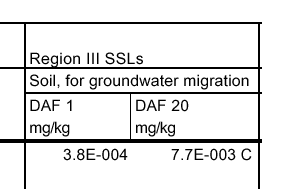
You have a model that requires lots of parameters. You input these parameters and your model outputs predictions of contamination levels in space and time. If your model fits the data in the nearby wells, you feel confident, with some judgment, that your model will predict the future. However, the usually situation is that some of the parameters are known, some are poorly known, and some are guesses. If your initial model and parameters fit the nearby well, this may be only because you guessed the parameters right. On the other hand, if the model does not fit, you adjust the parameters you feel justified in changing. Now does the model fit?
The key, both in ethics and competence, comes in this parameter selection. If you purposefully manipulated parameters to give the right answer, you may have been wrong technically and certainly ethically. On the other hand, if you used all sound parameters, and only made reasonable adjustments based on good judgment, you may be correct. Clearly if your answer varies a great deal depending on a poorly known parameter, you need to do more research on that parameter, or state the final answer with a range of values contingent on that parameter.
One of the important and usually unknown parameters is degradation rate. Degradation might be chemical or biological. You can test either with "bench," that is laboratory, tests but it is difficult to be certain the field result will correspond.
Usually companies that model these groundwater contamination problems drill many monitoring wells and test their model through the years, or as long as the money holds out.
DAF. The last column on the RBC Table:

Here is what DAF means:
2.5.5 Dilution/Attenuation Factor Development. As contaminants in soil leachate
move through soil and ground water, they are subjected to physical, chemical,
and biological processes that tend to reduce the eventual contaminant concentration
at the receptor point (i.e.,drinking water well). These processes include adsorption
onto soil and aquifer media, chemical transformation (e.g., hydrolysis, precipitation),
biological degradation, and dilution due to mixing of the leachate with ambient
ground water. The reduction in concentration can be expressed succinctly by
a DAF, which is defined as the ratio of contaminant concentration in soil leachate
to the concentration in ground water at the receptor point. When calculating
SSLs, a DAF is used to backcalculate the target soil leachate concentration
from an acceptable ground water concentration (e.g., MCLG). For example, if
the acceptable ground water concentration is 0.05 mg/L and the DAF is 10, the
target leachate concentration would be 0.5 mg/L.
Using the RISC Model.
About ¾ of the students used the model without problems. About 25% had
problems.
Here are two different views:
Simulation takes about 3 minutes to complete on my 333MHz! The bad thing is
that it says COMPLETE-PLEASE CONTINUE before it's actually finished running
the model. What I have found is that better to give it a minute or two even
when it's finished calculation. Otherwise it builds absolutely flat graph.
As far as questions and comments…I would be interested in your thoughts
on the questions you posed to us (the answer I provided above) as to what you
would focus your time and money on studying that would provide you with the
most worthwhile information.
See closure
Another view.
My first impression of the model is that it is VERY predictable. I ran a number
of simulations and each time changing only one or very few of the parameters,
and then before I looked at the results, I would try to guess what the graph
would look like. Each time I was right. I changed the soil type to gravel in
both the unsaturated zone and in the aquifer and in within 1-8 years, there
was a spike at .0017ppm with the well at 100 meters. In my mind, this is completely
predictable. Gravel is so porous that the contamination is going to pass quickly
through and move on in the direction of groundwater flow. If you move the well
to 20 meters, you will still see that spike, however it will be a bit higher
in concentration only because it hasn't had the distance to travel to dilute.
If you change the soil type to silty clay, move the well back to 100m, you won't
see a spike until 80-100 years down the road. The reason as to why is also quite
simple.
Working with the RISC model was interesting (which is another way of saying
it really was horrible and frustrating!)…I started out using tetrachloroethane.
I had problems with the simulation results changing when given the same inputs.
I ran many, many, simulations and got results that were just plain weird. I
re-downloaded the program and had the same problems. I then tried with a new
chemical (carbon disulfide). I also began exiting the program each time I wanted
to run a new simulation (don't ask me why…I was just trying everything).
Anyway, that actually seemed to work better. I felt like the 1st 10 or so simulations
I ran were giving me good answers. Then it started going wacky again. For example…when
I changed infiltration rate from 100 to 150 cm/year, I got answers varying from
peak concentrations of .0025 mg/l in 25 years, to .14 mg/l in about 18 years.
Others have reported similar problems.